Whether you like it or not, there could be some rats inside your house hiding somewhere. As you most likely know, these house pests cause damage to properties and can transmit infectious diseases to humans. But how can you eradicate them? To do that, you should first know their habitat and behavior.
What are the different types of rats in your home? The different types of rats are cotton rats, marsh rice rats, Norway rats, roof rats, and wood rats. Although all of them may look similar, some of them have different colors and other physical differences. Therefore, it’s very important to distinguish one from the others.
Scientifically known as “Rattus,” rats belong to the broad and complex subfamily Murinae and have about 64 different species around the world. Generally speaking, rats are omnivores, but if possible, they will choose meat. Nonetheless, they are great scavengers in packs (groups) and will eat any kind of food.
Why Are Rats a Problem?
As mentioned above, rats damage properties, including roofs, doors, ledges, windows, and walls. They gnaw almost all kinds of materials such as plastic, wood, and metal, including lead and electrical wirings. In fact, a severe infestation of rats can destroy building slabs and foundations, and an entire house.
Most rat species also eat all kinds of foods, including meat, grains, seeds, fruits, and vegetables, regardless if they are fresh or rotten. These rodents also eat and destroy garden crops, fruit-bearing plants, and flower plants. Their favorite spots in the house are dark or semi-shaded areas such as attics and storage rooms.
Rats can also bring fleas and ticks to your home. But more importantly, humans and animals can get sick if they eat food that has been eaten or contaminated by rats. These filthy creatures can also transmit diseases to people and pets through bites, scratches, and direct contact with their saliva, feces, and urine.
Related: Do Rats Carry Rabies? | Information and Facts
How Do You Know If You Have Rats?

The best way to know if you have rats inside your house is when you see them. However, these house pests are nocturnal, which means they are most active at night. Although they also appear during the daytime, it is very seldom. Nevertheless, here are some of the indications or signs of rat infestation inside your house.
1. Rat Droppings
Normally, rat droppings are black or dark brown and are 1/2 – 3/4 inch long. They look like a huge grain of rice and are usually found concentrated in a particular area. On average, an adult can produce up to 40 pieces of poop per night. Nevertheless, rat droppings and bat droppings are almost the same.
If you have rats in your house, you will most likely see their poop in attics, under the sink, inside the drawers, shredded paper, and fabric. Rats may also poop outside your house, such as the garden, lawn, garage, and even swimming pool. Fresh rat poop is soft and shiny, while old feces are dry, hard, and crumbly.
2. Rat Marks and Tracks
Rats have very poor eyesight, so you can easily see dark, oily rub marks on surfaces that their bodies have bumped into along the way. Usually, you will see those marks on their pathways, such as pipes, conduits, ledges, and electrical wires. On the other hand, rat gnaw marks can be seen in food packaging.
Meanwhile, rat tracks can be tooth marks that are about ⅛ inch long and are usually seen on wooden surfaces. To find tracks and marks, you may want to do the searching in broad daylight. For dark areas, use a flashlight. You may also spread a thin layer of baby powder on the area so you can identify them better.
3. Rat Nests
Depending on the species, rats may create their nest in attics, basements, trees, and deep burrows. Rats prefer living in dry and hidden areas where their females can take care of their young privately. Among the materials they use for making their nest are fabrics, shredded paper, cardboard, scrap, and dried plant matter.
If you have rat holes or burrows in your lawn, it’s very likely that you also have a rat nest inside your house. But again, rats may also create a nest outside your house. If possible, they prefer to have their nest near the source of food and water. Nevertheless, most rats will go back to their nest even if you disturb them.
4. Rat Noises
Rats usually make scratching noises at night when they are most active. In fact, they may even wake you up in the middle of the night. During these times, these rodents are probably running along the walls, through the ventilation system, ceilings, and attic. In some cases, rats also squeak while they are traveling.
Aside from scratching and squeaking, rats also do chattering and hissing, which is a sign that they are scared or in pain. They also grind their teeth when they are happy or feeling stressed. Rats also never stop growing their teeth, which is another reason for their teeth-grinding habit and chewing hard objects.
5. Very Foul Smell
Rat poop has a very strong foul smell, and you don’t need to see them before you can smell them. On the other hand, rat urine has a more noticeable smell. If there is poop, there’s also urine. In most cases, their poop and urine are in their nest. But more importantly, dead rats have a very disgusting and unforgettable smell.
If you have pet dogs or cats, they can better smell the presence of rats than humans. Your dogs will feel uncomfortable and will bark while sniffing and trying to locate where the smell is. On the other hand, cats have a very superior sense of smell. Once your cat smells a rat, she will do everything to find its location.
Types of Rats | Identification, and Habitat
As mentioned earlier, there are five common types of rats. Some of their characteristics are the same, but they may differ in behavior, size, and droppings. As you will read along, you will learn more about them and you will have an idea of the type of rat that’s invading your house.
1. Cotton Rats
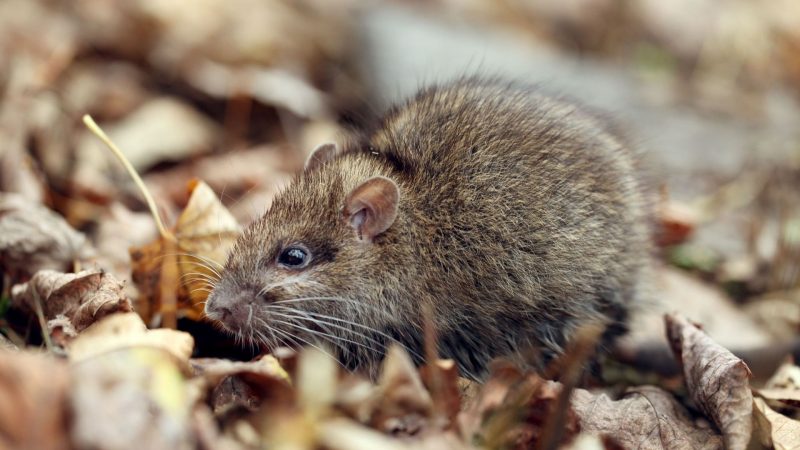
Scientifically known as “Sigmodon hispidus,” hispid cotton rats are mostly found in grass fields and meadows in the southern part of the US. Although they also sometimes invade houses, cotton rats are herbivores. Therefore, they prefer eating plants, including the leaves, seeds, roots, and stems, rather than meat.
Cotton rats also eat fruits, nuts, berries, sugarcane, and young birds. If none of them are available, they will also eat the carcasses of dead animals. Meanwhile, they are also known carriers of Hantavirus Pulmonary Syndrome (HPS), a deadly disease that can be transmitted to humans, directly and indirectly.
What Do Cotton Rats Look Like?
Weight: About 160 grams
Length: 5 – 7 inches long (tail not included)
Color: Grayish-brown to grayish-black
Ears: Small to large (almost hidden in the fur)
Tail: 3 – 4 inches long, hairless
Droppings: Pale greenish or yellow, about 9 mm (3/8 inch) long, 5 mm (3/16 inch) in diameter
2. Marsh Rice Rats
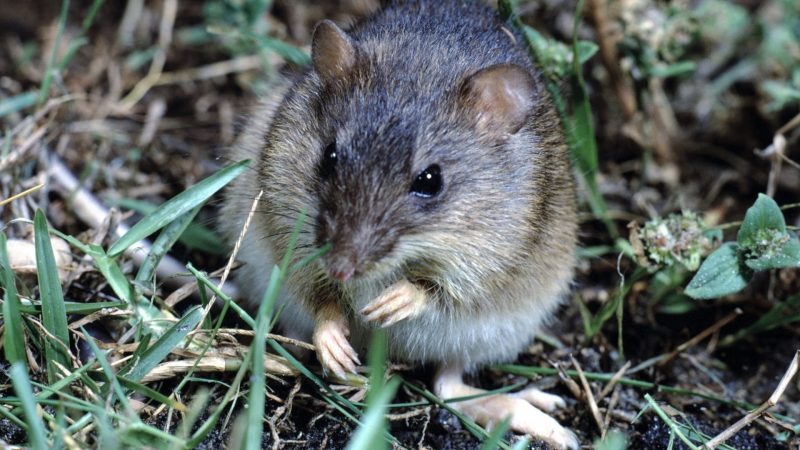
Scientifically known as “Oryzomys palustris,” marsh rice rats are mostly found in eastern and southern parts of the US. They usually live in wet habitats such as streams, lakes, salt marshes, and swamps, hence the name. These medium-sized rice rats resemble cotton rats, except that they have smaller bodies.
Just like other types of rats, marsh rice rats will eat any kind of food available. Nevertheless, they are omnivores and usually eat plants and meat. This includes snails, fishes, insects, grass, aquatic plants, and bird eggs. On the other hand, marsh rice rats are also carriers of Hantavirus Pulmonary Syndrome (HPS).
What Do Marsh Rice Rats Look Like?
Weight: 40 – 80 grams
Length: 9 – 13 inches long (including tail)
Color: Greyish brown; some species are reddish
Ears: Small
Tail: 4.3 – 6.1 inches long, haired
3. Norway Rats
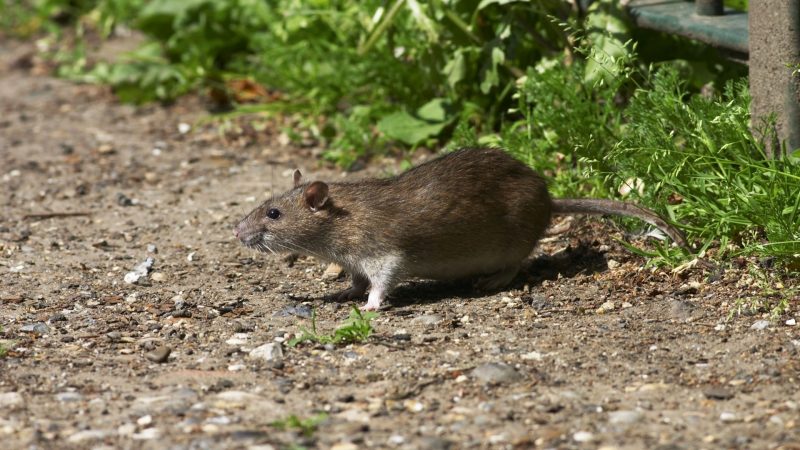
Scientifically known as “Rattus norvegicus,” Norway rats can be found almost anywhere across the US and are one of the most common rats in the world. Also called brown rats or sewer rats, Norway rats usually live in areas where there are humans. Therefore, they are seen in sewers, open fields, buildings, and houses.
Brown rats are not picky eaters. But if given a chance, they prefer meat and fish over vegetables. They are also excellent diggers and swimmers. Among the diseases that brown rats carry are Hemorrhagic Fever with Renal Syndrome, Leptospirosis, Salmonellosis, and a type of Hantavirus called Seoul virus.
What Do Norway Rats Look Like?
Weight: 200 – 500 grams
Length: About 16 inches long, including the tail
Color: Brown or dark grey
Ears: Don’t reach their eyes
Tail: About 21 cm long, shorter than the body
Droppings: Brown, capsule-shaped, 1.8 – 2.0 cm long
4. Roof Rats
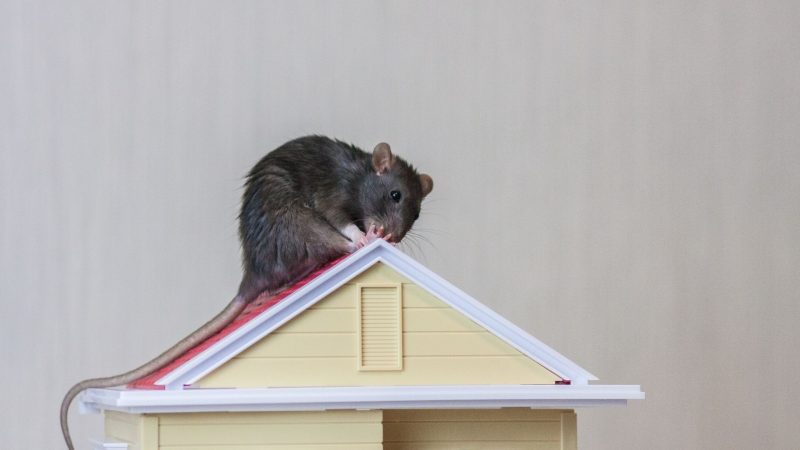
Scientifically known as “Rattus rattus,” roof rats are slightly smaller than Norway rats and very common in almost every part of the world. Also called house rats or black rats, roof rats live in buildings and houses and can be found in enclosed or elevated spaces such as ceilings, attics, cabinets, and walls.
Black rats usually live in the same house as brown rats. However, they usually fight, and the brown rats win because of their size. On the other hand, house rats are better climbers. Nevertheless, black rats also carry almost the same diseases as brown rats, and they can also transmit them to humans.
What Do Roof Rats Look Like?
Weight: 5 – 10 oz (142 – 284 grams)
Length: 6 – 8 inches long
Color: Black or brown
Ears: Long enough to reach eyes if folded over
Tail: 6 – 8 inches long, hairless but scaly
Droppings: 12 – 13 mm long with pointed ends
5. Wood Rats
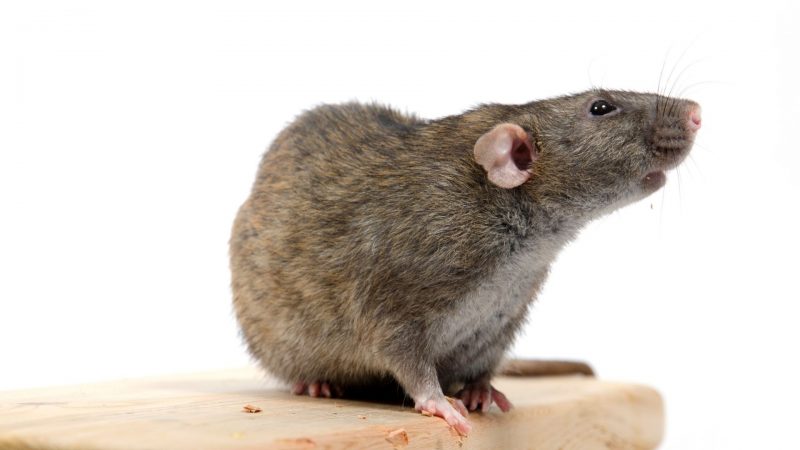
Also called pack rats, wood rats are any of the many species that belong to the genus Neotoma. The most common species is the white-throated woodrat. Scientifically known as “Neotoma albigula,” white-throated woodrats are usually found in most areas of Arizona, Colorado, New Mexico, Utah, and Nevada.
Wood rats are commonly seen in scrublands, deserts, and arid forests. However, they also invade homes in search of food and materials they can use for their nests. Pack rats damage furniture and books, and “steal” personal belongings such as coins and keys. They are also carriers of the Chagas disease.
What Do Wood Rats Look Like?
Weight: About 197 grams
Length: About 12.9 inches long, tail not included
Color: White or light gray with a white throat
Ears: Large and hairless
Tail: Bi-colored, shorter than body
Droppings: Dark, oval-shaped, about 1/2 inches long
What Is the Difference Between Rats, Mice, and Rodents?
Rats and mice are both rodents, which also include beavers, guinea pigs, hamsters, porcupines, prairie dogs, and squirrels. The most noticeable difference between a rat and a mouse is the size. Rats are relatively bigger than mice, and they also have bigger droppings. On the other hand, mice can fit in smaller holes.
Both rodents are great swimmers and can wade in the water for up to 3 days without drowning. However, rats jump higher and farther than mice. Both of them also carry almost the same diseases, but rats are more aggressive than mice and are more prone to biting humans. This is also why mice are afraid of rats.
What Will Help Keep Rats and Mice Away?
So far, the best way to keep rats and mice away is good sanitation. This includes blocking or covering all their possible entrance, removing all food and water sources, and regular checking and cleaning of hidden parts of the house or those seldom being used. To eradicate them, you can create traps with attractive bait.
You can also use rodenticides (rat poison) to kill rodents. However, they contain toxic chemicals that can harm humans (especially small children) and pets. If you are planning to use them, read the label carefully and follow the instructions. If the rat infestation is serious, contact an exterminator or a pest control company.
Related: Rat Control: How To Get Rid of Rats?
List of Sources
Timm, R. M., et al. (2011). How to Manage Pests – Pests of Homes, Structures, People, and Pets – Rats. Agriculture and Natural Resources, University of California.
Pierce II, R. A. (2012). Controlling Rats. University of Missouri Extension.
Diseases Directly Transmitted by Rodents. (2017). Centers for Disease Control and Prevention.
Meikle, D., Powers, K. (2011). Hispid Cotton Rat – Sigmodon hispidus. University of Michigan.
Rivadeneira, P., Gouge, D. H. (2018). Roof Rats: Identification, Ecology, and Signs. The University of Arizona Cooperative Extension.
- Bed Bug Surge 2025: How to Detect, Prevent, and Safely Eliminate Infestations in Top U.S. Cities - June 18, 2025
- Asian Needle Ants Invade US Homes: 2025 Guide to Identification, Risks, and Effective Control - June 11, 2025
- New World Screwworm Alert: How US Livestock Owners Can Prevent Outbreaks and Protect Herds [Summer 2025 Update] - June 8, 2025
